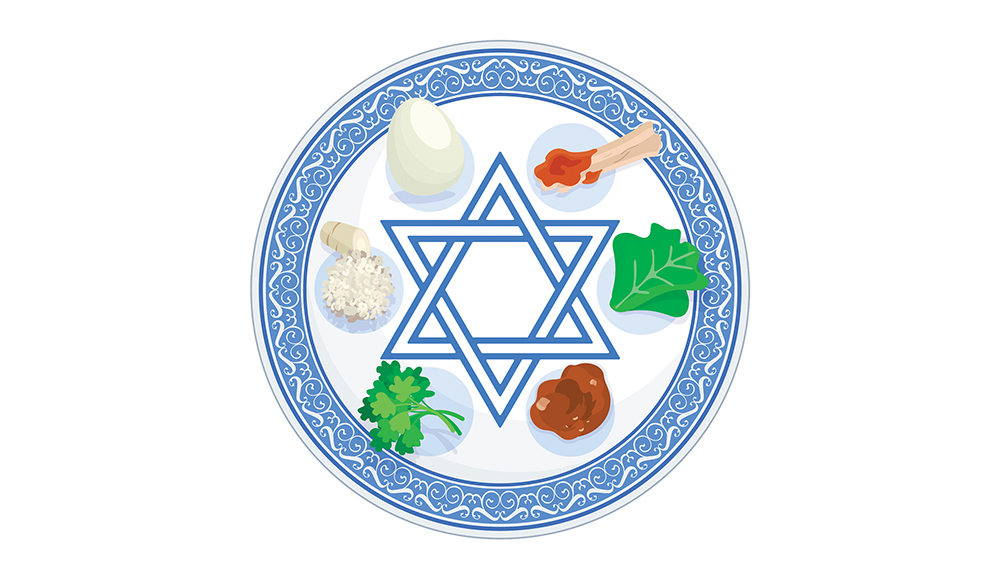
We read in the Haggadah that the ben haRasha, the wicked son, asks, “Ma ha’avodah hazos lachem? — What is this service to you?” He’s had enough. He doesn’t understand why you want to be part of this religion, and he wants no part of it. As Chazal explain, he removes himself from the community — “hotzi es atzmo min haklal.”
Rav Meilech Biderman asks a striking question: Why, of all times, does Pesach provoke this reaction? Why does the rasha ask his challenging question specifically on this Yom Tov? One would think that if anything would bring out frustration or skepticism, it would be Yom Kippur, a long, intense and emotionally demanding day—or perhaps Rosh Hashanah, with its extended tefillos and judgment. But Pesach? Pesach is about freedom, redemption, family, wine and celebration! What could possibly turn someone off about that?
Rav Biderman offers a powerful insight: In the weeks leading up to Pesach, the atmosphere in the home can become tense. There’s stress, pressure and anxiety. I would add that there’s often a lot of complaining about the cleaning, cooking, prices and stores. Children hear their parents lamenting how much everything costs, how exhausting the preparations are, how unfair it all feels. And when that’s the message filling the air, it’s no wonder that a child might ask, “What is all of this for?” Why would I want to be a part of something that seems so burdensome?
This is why it’s so important to bring joy and positivity into our observance of mitzvos, especially around Pesach time. Instead of complaining about the price of matzah, or how thick or thin it might be, let’s talk it up!
The Mishnah Berurah (Siman 473:5) quotes the Shelah HaKadosh, who wrote that Bnei Aliyah, those striving for spiritual greatness, would kiss the matzah and maror.
Express excitement: “Ah, I just love matzah!” Smile when you eat it. Kiss it. Let your children see that you feel truly privileged to be able to fulfill Hashem’s mitzvos.
Making Other Pesach Mitzvos Exciting for Our Children
And while we’re on the topic, there are so many beautiful ways to make mitzvos more meaningful and exciting. Rav Nosson Gestetner, zt”l, quoted in Haggadah Shel Pesach Yechi Reuven (p. 20), would bring his chametz to the burning wrapped in the elegant challah cover he used on Shabbos. Why should such a meaningful mitzvah be done with a crumpled brown bag? Give it the honor it deserves!
Rav Avigdor Miller, zt”l, as described in his biography (p. 241), would hide chocolate together with the 10 pieces of bread for bedikas chametz, so that his children would not associate the mitzvah with tension or scolding, but rather with joy and excitement. He wanted them to always look forward to bedikas chametz.
Children and What They Learn in School
Rav Shlomo Zalman Auerbach, zt”l (as recorded in Halichos Shlomo on Pesach) was opposed to how children typically sing Ma Nishtana at the Seder. He felt it should be asked as a genuine question, and the common tune doesn’t reflect that tone.
Yet, in his own home, the girls sang Ma Nishtana using that very melody. When asked about it, he explained that this is how they learned it in school, and he didn’t want to interfere.
This is a powerful insight. He could have stood his ground. He could have called the Bais Yaakov and voiced his opinion—after all, he was Rav Shlomo Zalman. But for the sake of his children and their education, he chose not to.
Pesach is not the time to make a point about how schools should be run or what teachers should teach. Be flexible. Celebrate what your children share. Don’t poke holes in their divrei Torah or make fun of their gematrias. Embrace it (and them) and enjoy it (and them).
Buy Candy—Lots of It
The Gemara writes that we give out keliyos v’egozim (roasted grains and nuts) to children at the Seders, so they stay awake, engaged and excited.
I don’t know about your kids, but in my house, almonds—even chocolate-covered ones—just don’t cut it. So, here’s the suggestion: Before Yom Tov, go out and buy the best kosher for Pesach candy and chocolate you can find. Stock up. Give it to your kids before the Seder starts. Sneak it to them during the Seder. Hand it out when they say a vort, when they ask a good question, or even just because.
The goal is simple: They should love being at the Seder. They should look forward to it with great anticipation and joy. A little extra sweetness goes a very long way.
Which Items to Use at the Seder
The pillowcase, the afikomen bag, the charoses container—whatever your children made for Pesach is way more chashuv (important) than the leather, crystal or designer versions you might own. These projects are so special because they were created with love, care and the purest of intentions. Show your children how meaningful their work is to you. Use everything proudly. Tell your children: “I want to use what you made—it’s the most special thing to me because you made it.”
This isn’t just sentimental, it may even have a Halachic basis. The Shulchan Aruch (Orach Chaim 472:2) instructs that one should set the Seder table beautifully, with fine vessels, each according to his means. The Mishnah Berurah explains that on Pesach we are commanded to increase our use of beautiful physical items as an expression of cheirus, freedom.
The Mishnah Berurah records that the Maharil would place beautiful items on his Seder table—even ones he didn’t use during the meal— merely to enhance his joy. These objects served no practical function other than to bring simcha, which is exactly what Pesach night demands of us.
Rav Aharon Leib Shteinman, zt”l, known for his simplicity and detachment from material possessions, famously slept on the same thin mattress from the Jewish Agency for over 60 years. He had no use for fancy silver or fine china. But what did he place on his Seder table? One year, he had just published a Sefer on Tefillah, titled “Yimalei Pi Tehillasecha.” That book was what he placed on his Seder table—not silver, not crystal. He said, “This is what brings me joy—a lot more than nice utensils.”
The night of Pesach is about joy. It’s about cheirus, freedom. And our job is to do whatever we possibly can to enter that mindset of celebration and connection.
So, here’s a suggestion: Put your children’s projects on the table. Use the afikomen bag they made in preschool, the tissue-paper-covered charoses dish or the finger-painted pillowcase. Let their creativity, their effort and their chinuch bring joy to your table. Let them see that they bring joy to your table and to your life.
The Chofetz Chaim, who authored over 20 sefarim, once remarked about the Alter of Slabodka, Rav Nosson Tzvi Finkel zt”l: “I write sefarim, but he makes people.”
Our children and grandchildren are our sefarim. They are our legacy. They are our pride. Their presence, excitement and handmade contributions should bring us actual Simchas Yom Tov. They are what we will remember. And, more importantly, it’s what they will remember.
What to Talk About at the Seder
Rav Ben-Zion Kook writes that although Rav Wolbe, zt”l was known for elevating himself and those around him through mitzvos and deep Torah insights and never “dumbing anything down,” when it came to the Seder, he took a very different approach. Before the Seder, he would arm himself with questions, stories and illustrations specifically for the children.
For example, to help the children grasp the concept of Pharaoh, he would ask: “Who is the strongest, most powerful leader you know?” They would respond, “Gorbachev.” Then he would ask, “Can anyone tell him what to do? Can anyone mock or belittle him?” After they answered, he would explain, “Pharaoh was even more powerful than that.” When discussing the makkos (plagues), Rav Wolbe would vividly describe and illustrate each one in detail, bringing them to life.
Different families are comfortable with different styles—props, games, songs or merely great storytelling. The key is preparation. Think in advance about what will best engage your children. Plan which tunes you’ll use for Hallel and other parts of the Seder. The more thought you put in beforehand, the more meaningful and memorable the Seder will be for everyone.
Daven for It
Everyone is familiar with the meticulous Pesach chumros observed by the Brisker family. The wife of Rav Meir Soloveitchik, zt”l, son of the Brisker Rav, zt”l, once shared that the same scene repeated itself each year. About a week before Pesach, Rav Meir would quietly close the door to his room and pour out his heart in tears, davening to Hashem that he should be able to fulfill the mitzvos of Pesach properly—and with true simcha (as recounted in Sichos of Rav Ben Tzion Kook shlit”a).
This is a powerful reminder that beyond all the preparation and Halachic detail, we must also turn to Hashem with tefillah. We should daven for hatzlacha, that the Seder and the entire Yom Tov be uplifting, meaningful and filled with joy—for ourselves, for our families and especially for our children.











